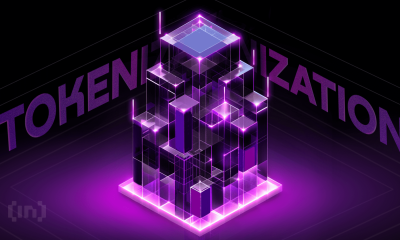Market
AI Tokens of the Week
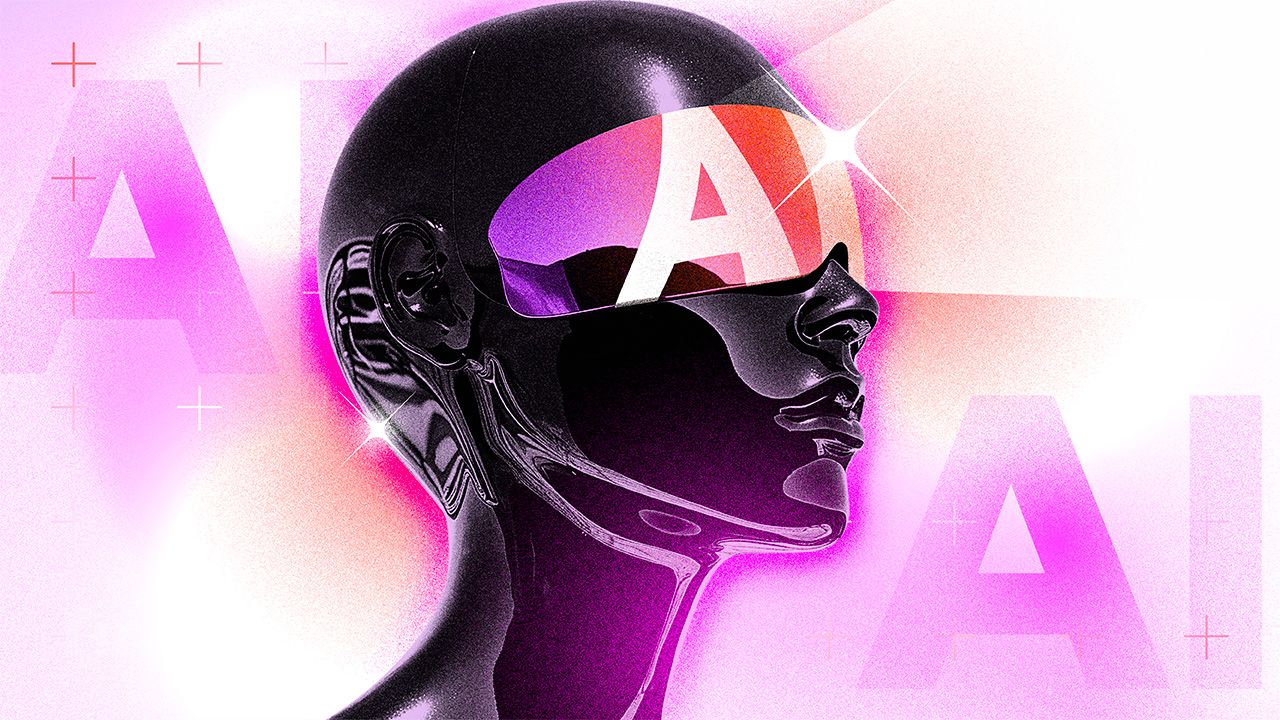
Undeniably, there has been a broader market pullback over the past couple of days. However, several AI-focused tokens have managed to post gains despite the downturn.
In this analysis, BeInCrypto highlights three AI coins with significant price growth.
AIOZ Network (AIOZ)
AIOZ, the native token of the AIOZ Network—a decentralized platform that leverages a global network of nodes to deliver content—has noted a 45.63% price surge over the past seven days. It is one of the AI tokens of the week to pay attention to. As of this writing, it trades at $0.75.
At its current price, the altcoin trades above its 20-day exponential moving average (EMA). The 20-day EMA calculates the average price over the past 20 days, with more emphasis on recent data points.
This setup indicates a short-term bullish trend. It signals that buying pressure is prevailing and the asset is in an uptrend.
If AIOZ maintains this upward trend, its price may climb toward $0.79. A successful rally past this level may set it on the path to reclaim its year-to-date high above $1.
However, there is a catch. Its plummeting Chaikin Money Flow (CMF) indicates that the buying pressure is weakening. AIOZ’s CMF, which tracks money flows into and out of its market, is below zero at -0.02.
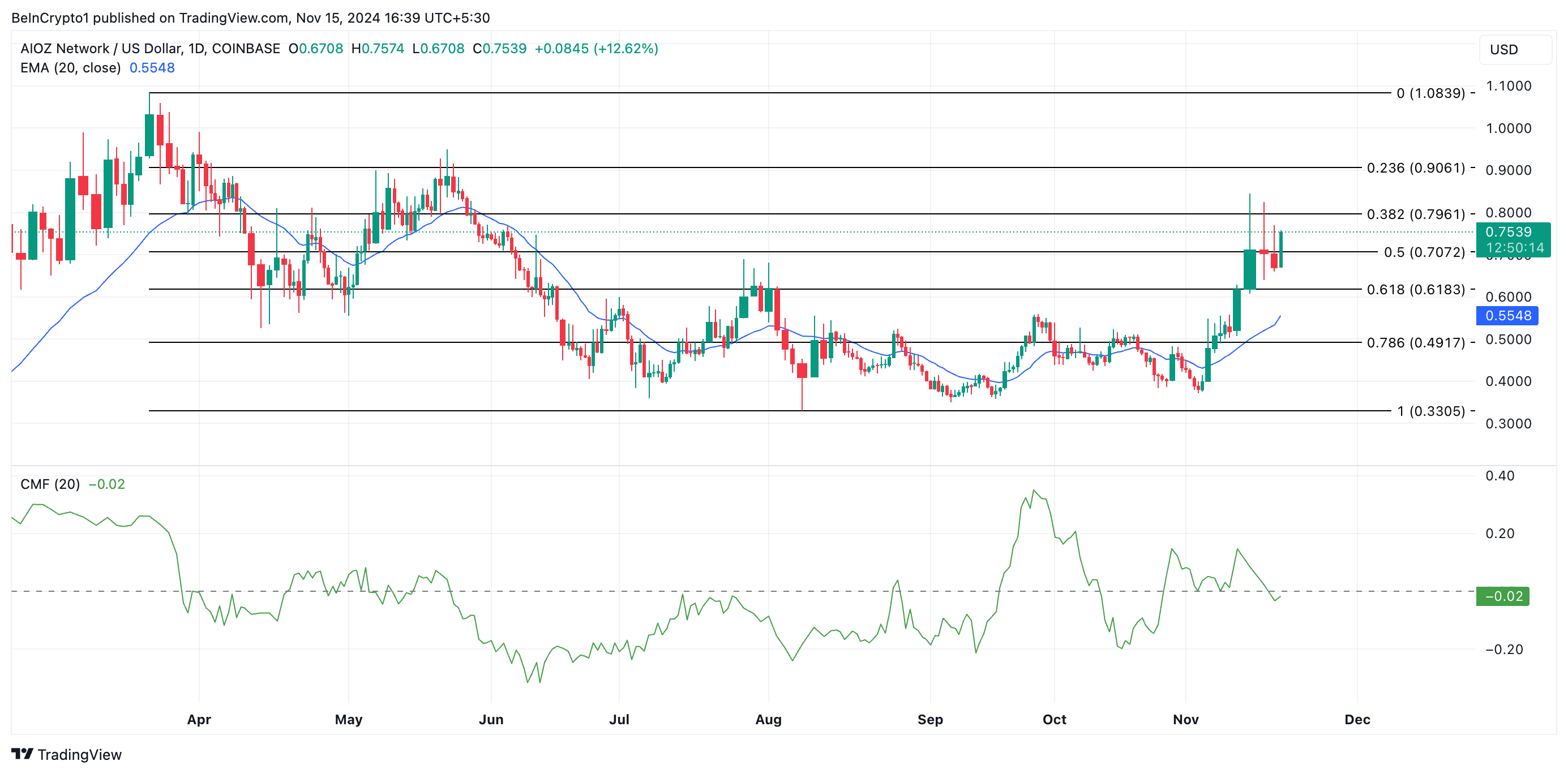
When an asset’s CMF is negative during a price rally, buying pressure is waning, thus forming a bearish divergence. This divergence is a warning signal that the rally may not be sustainable and could face a reversal if the selling pressure continues.
AIOZ’s price may fall to $0.61 if this happens, invalidating the bullish outlook above.
Render (RENDER)
The price of the leading AI-based token Render (RENDER) has spiked by 34% over the past seven days, making it one of the top AI tokens of the week. During the week in review, the AI-based token rallied to a five-month high of $7.20 before witnessing a pullback over the past 24 hours due to the general market downturn. Nonetheless, it trades at $6.69 and still enjoys a bullish bias.
RENDER’s Parabolic Stop and Reverse (SAR) indicator confirms this bullish outlook. As of this writing, the indicator’s dots, which identify an asset’s trend direction and potential reversal points, rest below RENDER’s price.
When the Parabolic SAR dots are positioned under an asset’s price, it suggests that the asset is enjoying upward pressure and the trend is bullish. Traders interpret this as a signal to go long and exit short positions.
If this trend persists, RENDER’s price will likely test resistance at $7.39. A successful breakout could propel the token towards $8.62.
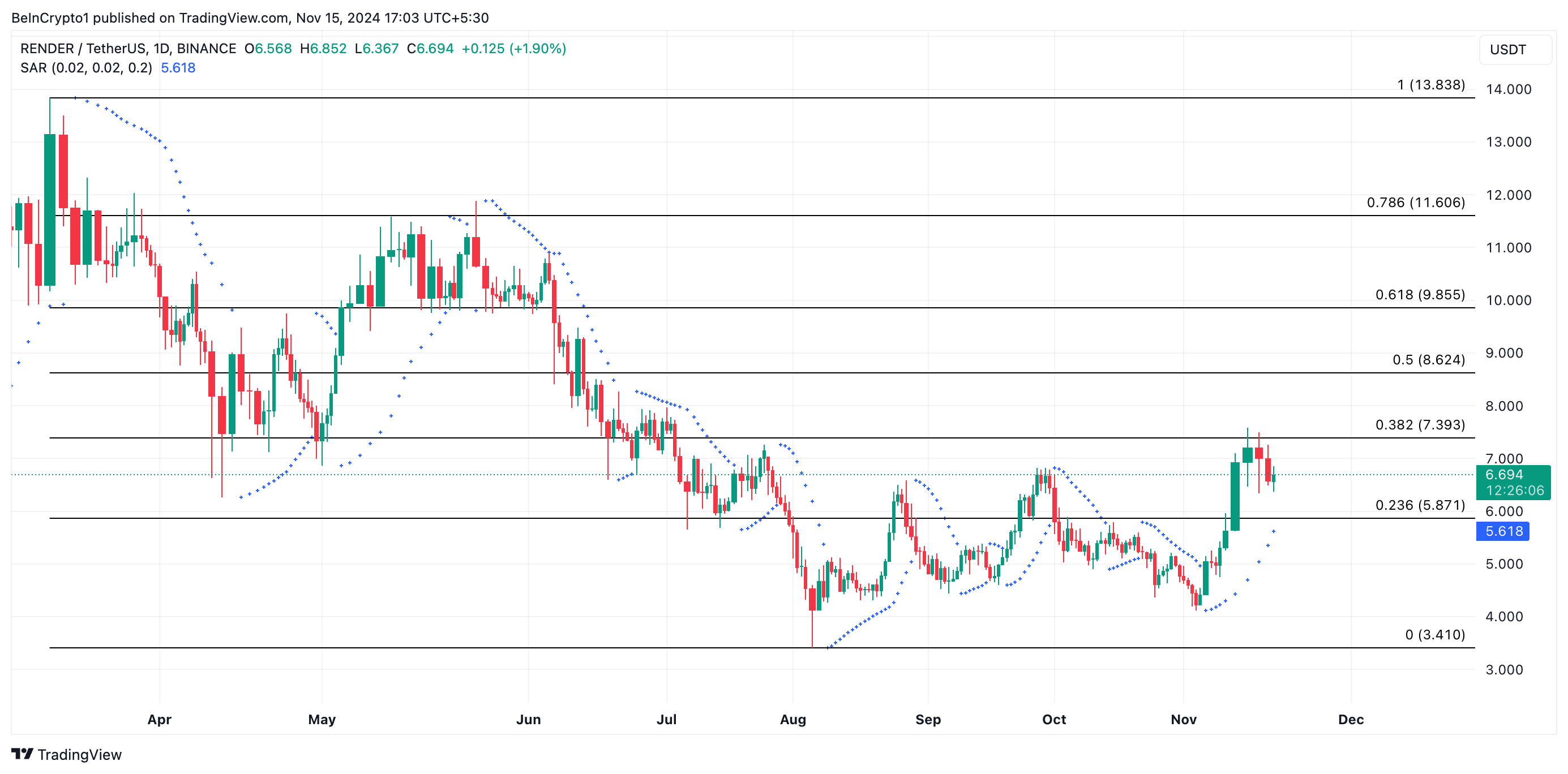
However, if profit-taking activity resurges, this bullish outlook may be invalidated. The token’s price may fall to $5.87.
NEAR is another AI token that has performed impressively over the past week. It exchanges hands at $5.52 and has logged a 31% rally in the week under review.
Its Elder-Ray Index confirms that the bulls remain in market control and are attempting to push NEAR’s price higher. At press time, the indicator’s value stands at 1.07.
The Elder-Ray Index measures the strength of buyers (bulls) and sellers (bears) in the market. When its value is positive, it generally means that buyers are stronger than sellers, indicating a bullish market sentiment.
If buying pressure strengthens, NEAR’s price will break above resistance at $6.04 and attempt to trade at $6.74, a high last reached in June.
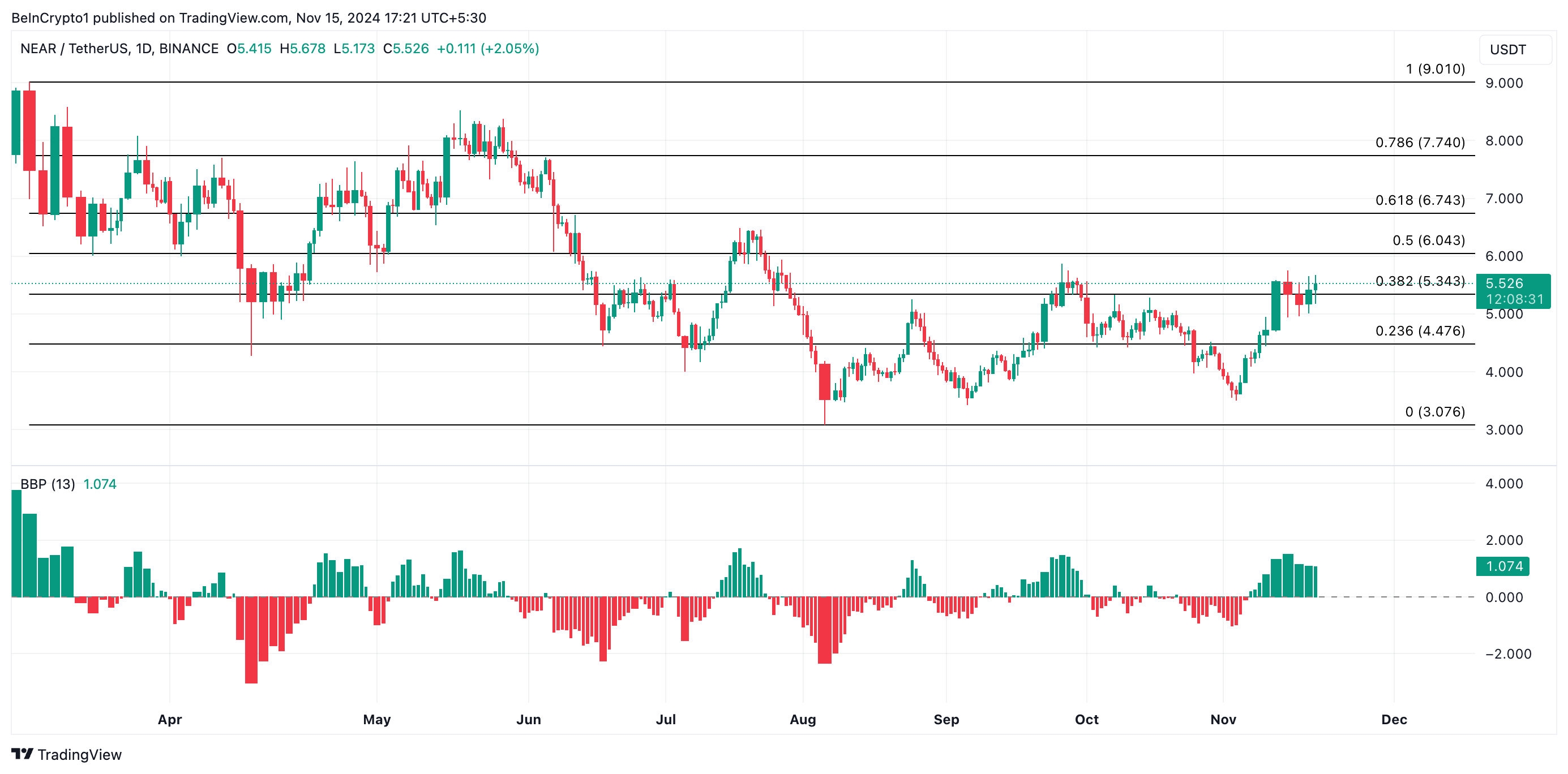
However, shifting market sentiment from positive to negative will invalidate this bullish thesis. If selling activity gains momentum, NEAR’s price may drop below $5 to trade at $4.47.
Disclaimer
In line with the Trust Project guidelines, this price analysis article is for informational purposes only and should not be considered financial or investment advice. BeInCrypto is committed to accurate, unbiased reporting, but market conditions are subject to change without notice. Always conduct your own research and consult with a professional before making any financial decisions. Please note that our Terms and Conditions, Privacy Policy, and Disclaimers have been updated.
Market
Solana Bulls Lead 17% Recovery, Targeting $138

Solana plunged to a 12-month low of $95.23 on April 7, marking a sharp decline amid broader market turbulence.
However, as the market embarked on a recovery this week, SOL has witnessed a rebound, with its price climbing as demand surges.
SOL Rebounds 17%, Eyes Further Gains
Since SOL began its current rally, its value has soared by 17%. At press time, the altcoin trades at $124.58, resting atop an ascending trend line.
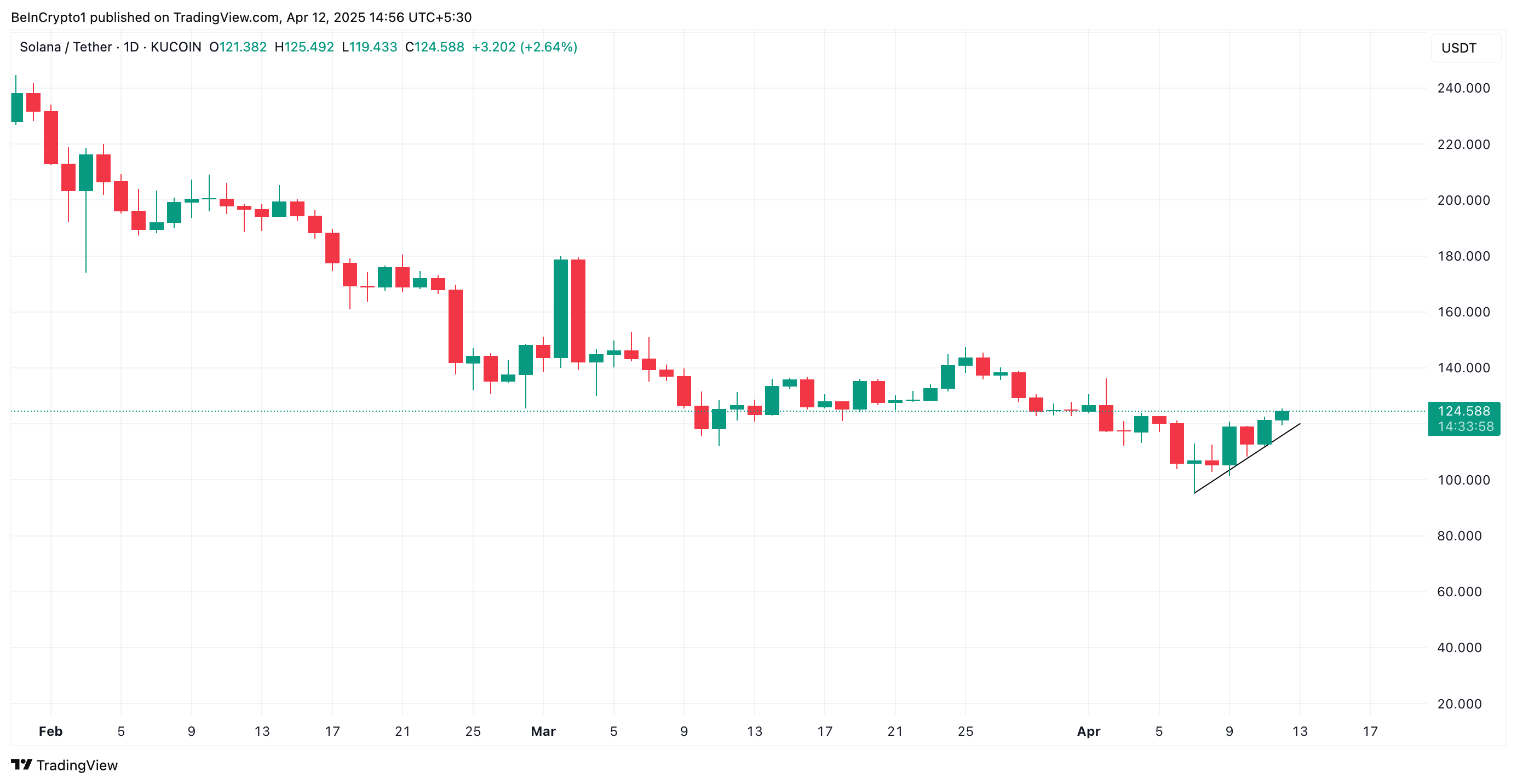
This pattern emerges when the price of an asset consistently makes higher lows over a period of time. It represents an uptrend, indicating that SOL demand is gradually increasing, driving its prices higher. It suggests that the coin buyers are willing to pay more, and it serves as a support level during price corrections.
SOL’s recovery is further supported by its rising Relative Strength Index (RSI), indicating increasing buying interest. This momentum indicator is at 49.58 at press time, poised to break above the 50-neutral line.
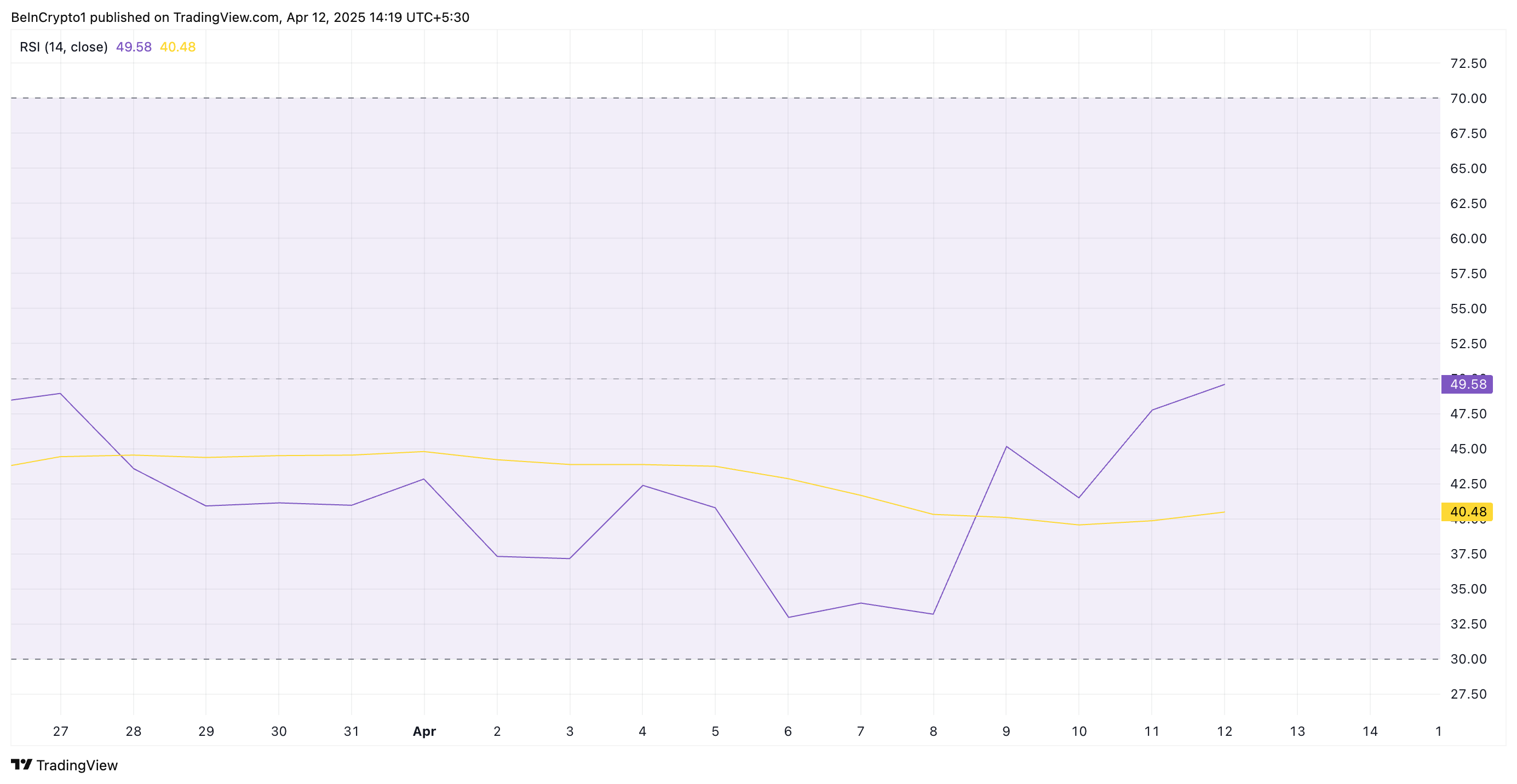
The RSI indicator measures an asset’s overbought and oversold market conditions. It ranges between 0 and 100. Values above 70 suggest that the asset is overbought and due for a price decline, while values under 30 indicate that the asset is oversold and may witness a rebound.
At 49.50 and climbing, SOL’s RSI signals a steady shift in momentum from bearish to bullish. A rise above 50 would confirm increasing buying pressure and a potential for a sustained upward price movement.
Solana Bulls Eye $138
SOL’s ascending trend line forms a solid support floor below its price at $120.74. If demand soars and the bullish presence with the SOL spot markets strengthens, the coin could continue its rally and climb to $138.41.
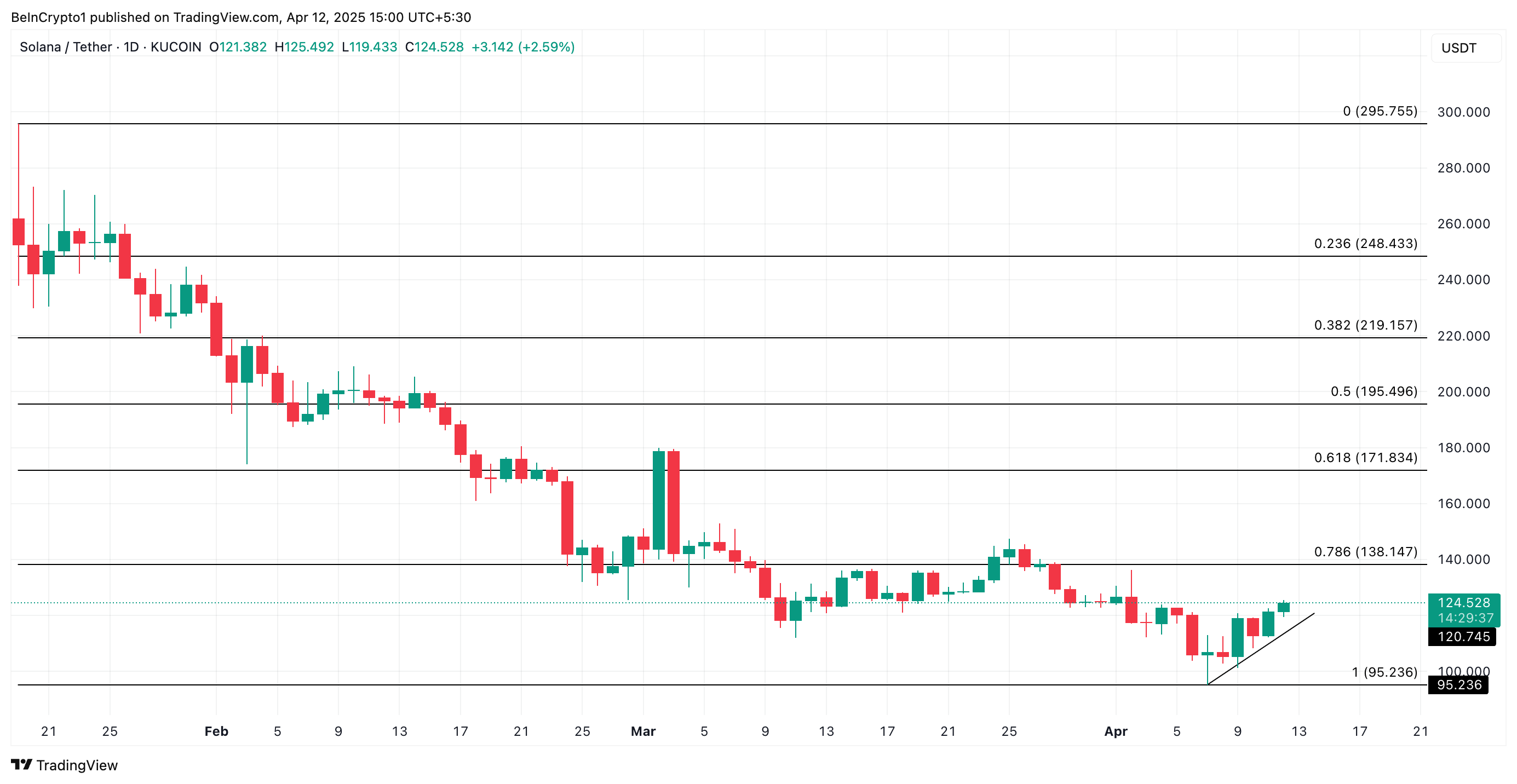
However, if profit-taking commences, the support at $120.74 would be breached, and the SOL’s price could revisit $95.23.
Disclaimer
In line with the Trust Project guidelines, this price analysis article is for informational purposes only and should not be considered financial or investment advice. BeInCrypto is committed to accurate, unbiased reporting, but market conditions are subject to change without notice. Always conduct your own research and consult with a professional before making any financial decisions. Please note that our Terms and Conditions, Privacy Policy, and Disclaimers have been updated.
Market
Ripple May Settle SEC’s $50 Million Fine Using XRP
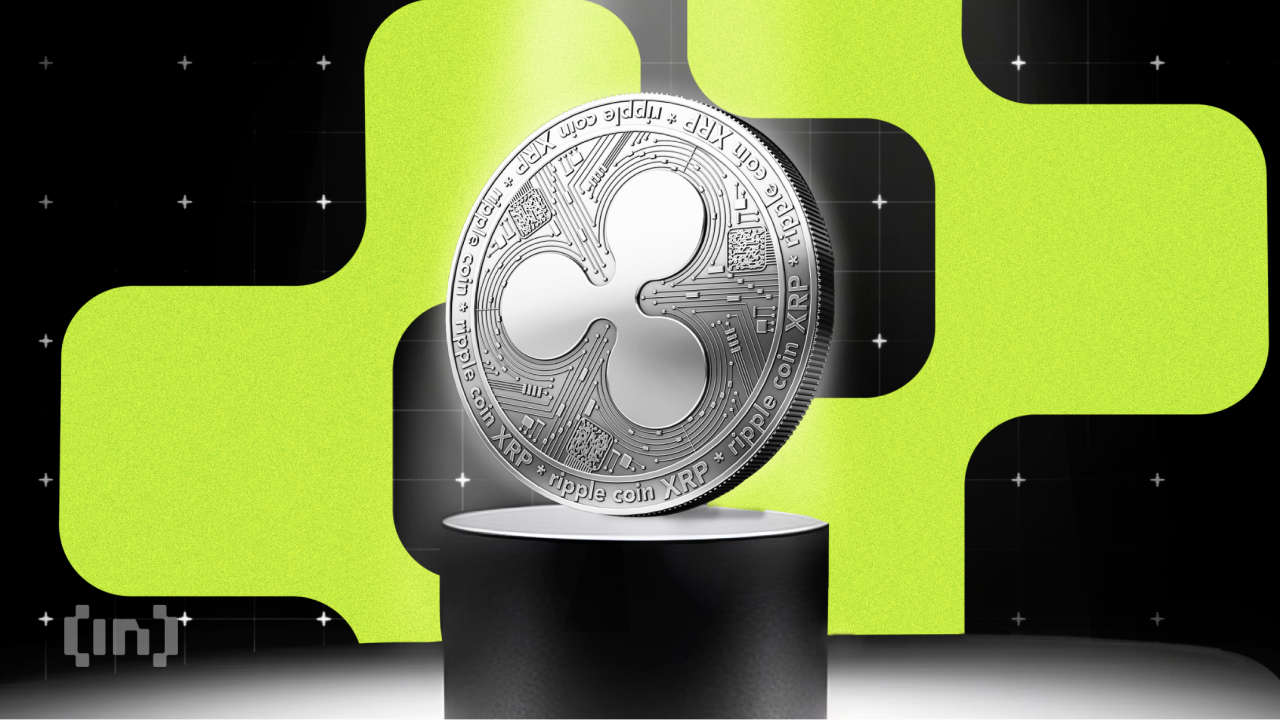

Ripple’s long-running legal clash with the US Securities and Exchange Commission (SEC) appears to be nearing its final chapter.
However, a surprising detail has emerged from the ongoing settlement talks, which could see Ripple pay its reduced $50 million penalty using its native token, XRP.
Ripple Could Use XRP Token to Pay SEC Fine
On April 11, Ripple CEO Brad Garlinghouse appeared on FOX Business. At the interview, he revealed that the idea of paying the penalty in XRP was floated during settlement discussions.
“The SEC is going to end up with $50 million and the US government gets $50 million and we talked about making that available in XRP,” Garlinghouse stated.
The ongoing negotiations follow Ripple’s and the SEC’s decision to drop their appeals, bringing the multi-year legal battle closer to closure.
“We’re moving past the SEC’s war on crypto and entering the next phase of the market – true institutional flows integrating with decentralized finance,” Garlinghouse added in a post on X.
Judge Analisa Torres originally set the fine at $125 million in 2024, linking it to Ripple’s unregistered XRP sales to institutional investors. Ripple complied by placing the funds in an interest-bearing account, but the appeals process delayed any further action.
With those appeals now abandoned, Ripple is expected to pay a reduced fine of $50 million.
A recent joint court filing confirms that both sides have reached a preliminary agreement. They are now seeking final approval from the SEC’s commissioners.
Once internal reviews are complete, the parties plan to request a formal ruling from the district court.
“There is good cause for the parties’ joint request that this Court put these appeals in abeyance. The parties have reached an agreement-in-principle, subject to Commission approval, to resolve the underlying case, the Commission’s appeal, and Ripple’s cross-appeal. The parties require additional time to obtain Commission approval for this agreement-in-principle, and if approved by the Commission, to seek an indicative ruling from the district court,” the filing stated.
If the commission votes in favor, this case could conclude one of the most closely watched regulatory battles in crypto history. More importantly, the use of XRP for the settlement could mark a significant shift in the SEC’s approach to digital assets.
This turnaround would represent a major regulatory shift and could trigger further bullish momentum for the token.
Since Donald Trump’s election victory in November 2024, investor confidence in XRP has grown sharply, pushing the token’s value up by more than 300%.
At the same time, institutional interest continues to rise, as seen in the wave of spot exchange-traded fund applications tied to the token
Market analysts have linked this performance to the friendlier political climate. They also point to the potential reclassification of XRP as a commodity as a key factor driving the asset’s rise.
Disclaimer
In adherence to the Trust Project guidelines, BeInCrypto is committed to unbiased, transparent reporting. This news article aims to provide accurate, timely information. However, readers are advised to verify facts independently and consult with a professional before making any decisions based on this content. Please note that our Terms and Conditions, Privacy Policy, and Disclaimers have been updated.
Market
Ethereum ETFs See Seventh Consecutive Week of Net Outflows

Ethereum ETFs have closed yet another week in the red, recording net outflows amid continued investor hesitation.
Notably, there has been no single week of net inflows since the end of February, highlighting waning institutional interest in ETH-related products.
Ethereum ETFs Face Steady Outflows
Ethereum-backed ETFs have recorded their seventh consecutive week of net outflows, highlighting sustained institutional hesitance toward the asset.
This week alone, net outflows from spot ETH ETFs totaled $82.47 million, marking a 39% surge from the $49 million recorded in outflows the previous week.

With the steady decline in institutional presence in the ETH market, the selling pressure on the coin has soared.
Over the past week, ETH’s price has declined by 11%. The steady outflows from the funds backed by the coin suggest that the downward momentum may persist, increasing the likelihood of a price drop below the $1,500 mark.
On the price chart, technical indicators remain bearish, confirming the mounting pressure from the selling side of the market. For example, at press time, readings from ETH’s Directional Movement Index (DMI) show its positive directional index (+DI) resting below the negative directional index (-DI).
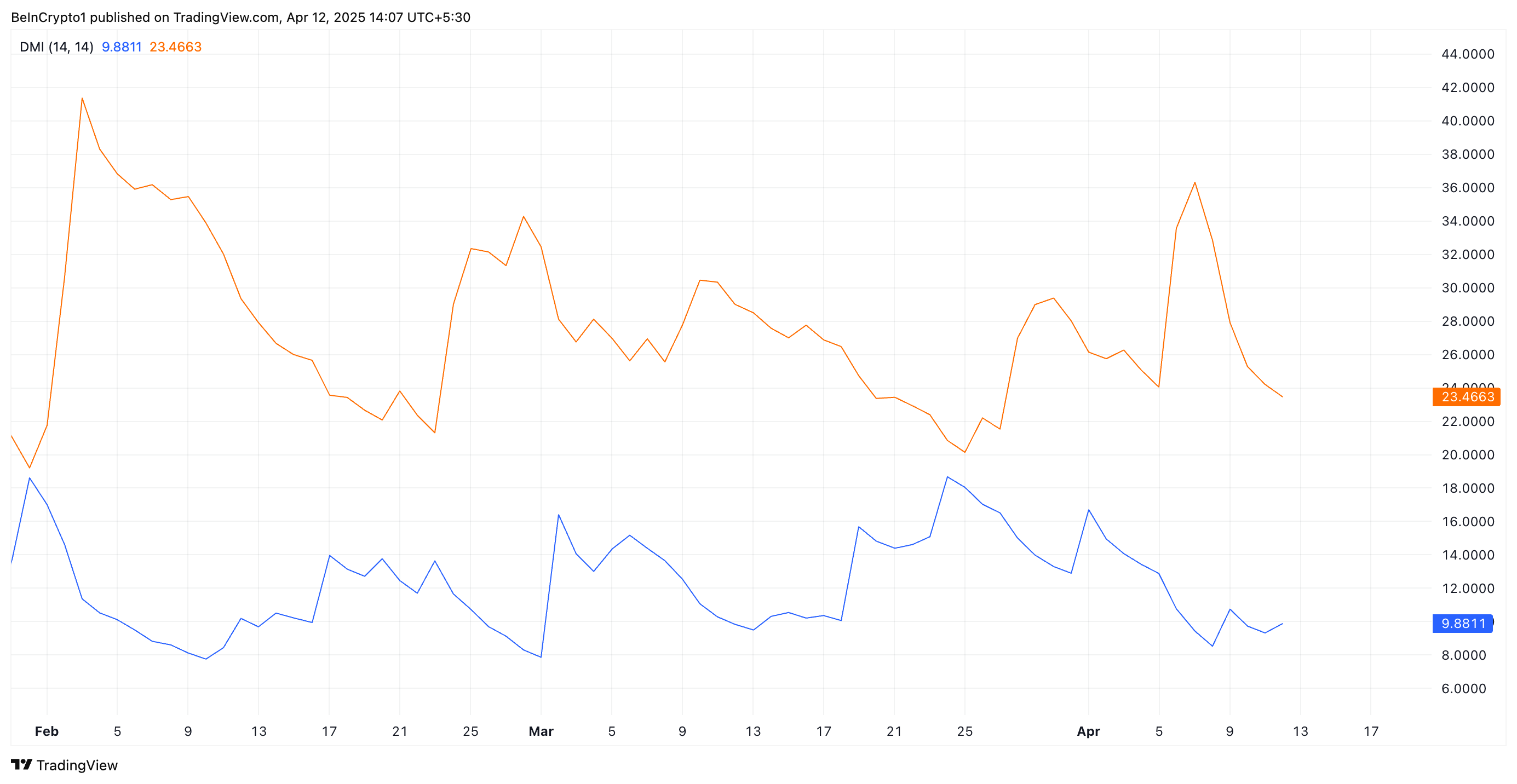
The DMI indicator measures the strength of an asset’s price trend. It consists of two lines: the +DI, which represents upward price movement, and the -DI, which represents downward price movement.
As with ETH, when the +DI rests below the -DI, the market is in a bearish trend, with downward price movement dominating the market sentiment.
Ethereum’s Price Could Drop Below $1,500
The lack of institutional capital could delay any significant rebound in ETH price, further dampening short-term prospects for recovery. If demand leans further, ETH could break out of its narrow range and follow a downward trend.
The altcoin could fall below $1,500 in this scenario to reach $1,395.
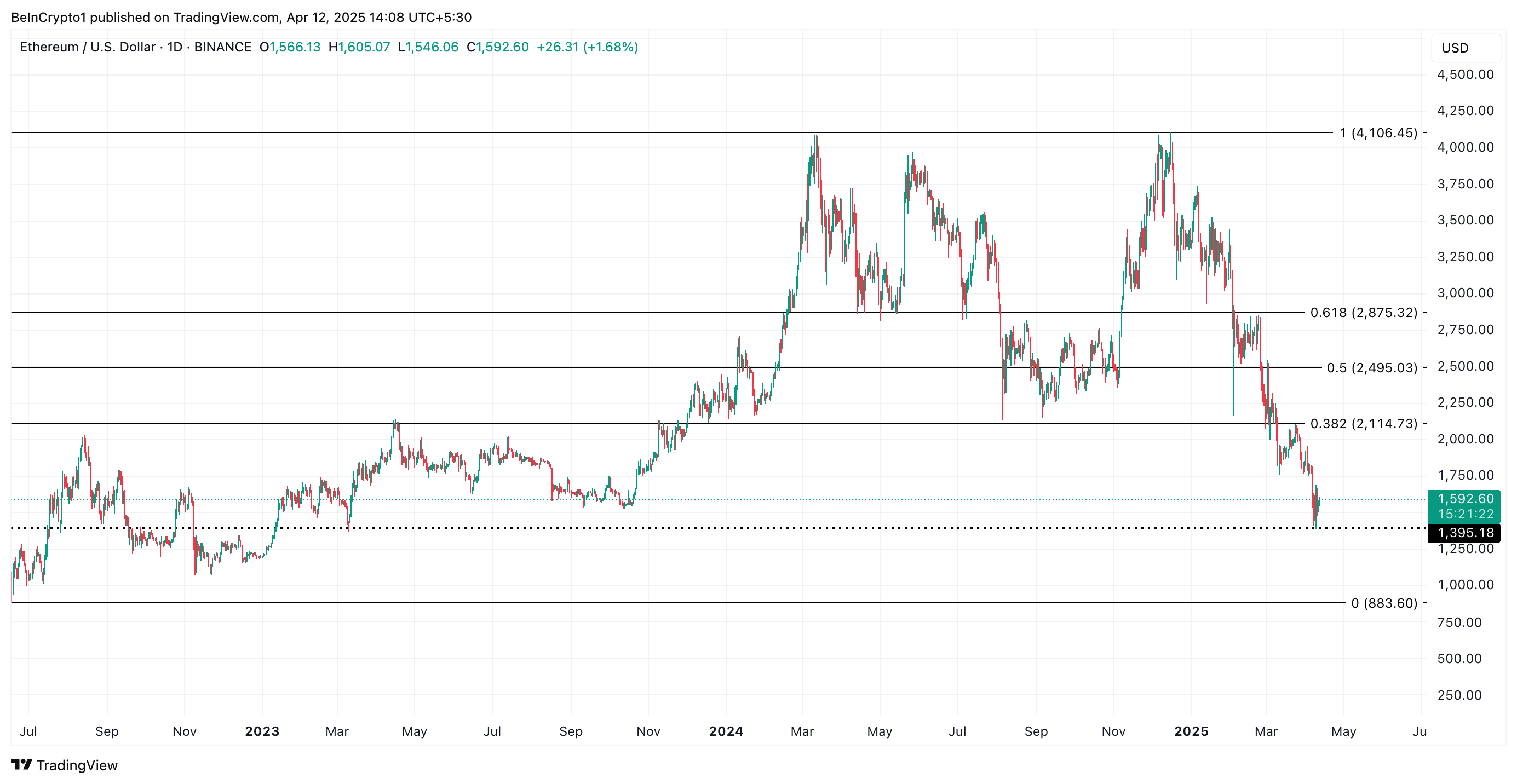
However, if ETH witnesses a positive shift in sentiment and demand spikes, its price could climb to $2,114.
Disclaimer
In line with the Trust Project guidelines, this price analysis article is for informational purposes only and should not be considered financial or investment advice. BeInCrypto is committed to accurate, unbiased reporting, but market conditions are subject to change without notice. Always conduct your own research and consult with a professional before making any financial decisions. Please note that our Terms and Conditions, Privacy Policy, and Disclaimers have been updated.
-

 Market22 hours ago
Market22 hours agoLawmakers Propose the PROOF Act to Avoid Another FTX Incident
-

 Market21 hours ago
Market21 hours agoThis is Why The Federal Reserve Might Not Cutting Interest Rates
-

 Market9 hours ago
Market9 hours agoArthur Hayes Expects Bitcoin Surge if Fed Injects Liquidity
-

 Altcoin8 hours ago
Altcoin8 hours agoBinance Issues Important Update On 10 Crypto, Here’s All
-

 Altcoin22 hours ago
Altcoin22 hours agoSolana Price Eyes Breakout to $200, SOL ETF Approval Timeline
-

 Market20 hours ago
Market20 hours agoXRP Price Flashes Symmetrical Triangle From 2017, A Repeat Could Send It as Flying To $30
-

 Market19 hours ago
Market19 hours agoCrypto Whales Are Buying These Altcoins Post Tariffs Pause
-

 Market18 hours ago
Market18 hours agoBinance and the SEC File for Pause in Lawsuit









